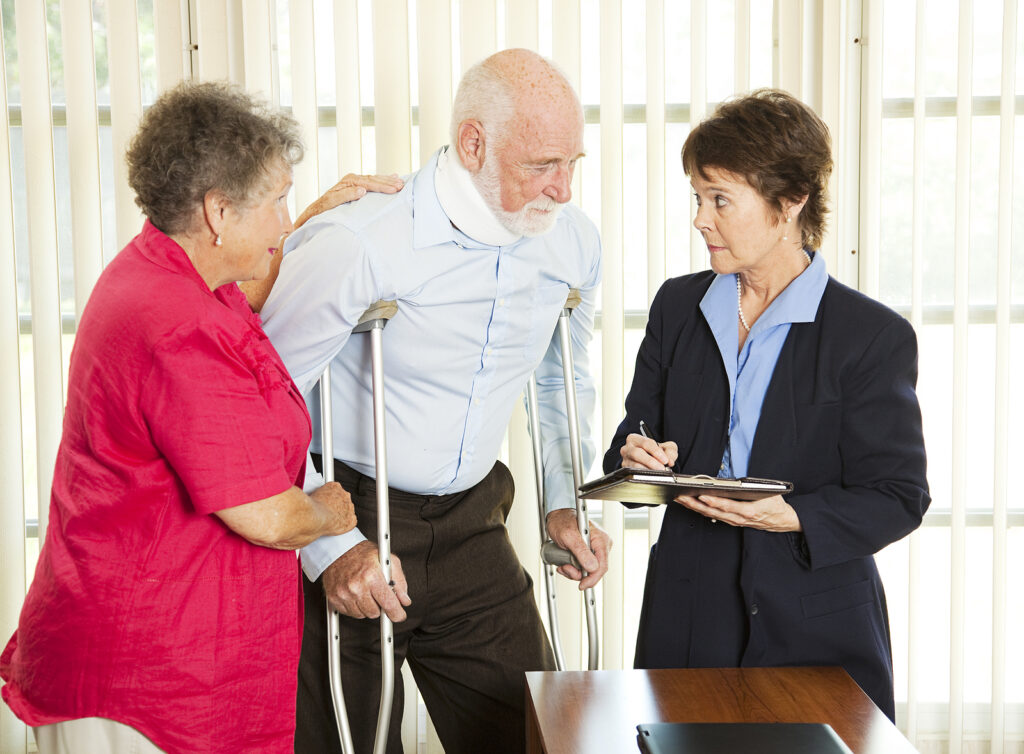
Rear-end collisions are the most common types of car accidents that happen in California. The National Highway Traffic Safety Administration (NHTSA) reports that rear-end collisions account for nearly one-third of all traffic accidents. While rear-end crashes are common, they can also cause serious injuries. Since some of the common injuries that happen in rear-end accidents have delayed-onset symptoms, some victims might not realize they have been injured and wait to seek treatment for days or weeks after their collisions.
It’s essential to seek an immediate medical evaluation after a rear-end accident regardless of whether you think you were injured. Getting an early diagnosis and prompt treatment can facilitate a faster recovery. By contrast, waiting to seek treatment could allow your injuries to worsen and lead to a longer recovery period. Immediate treatment can also help to protect your rights to recover compensation for your injuries and related losses. Here’s some information about the most common injuries in rear-end collisions and how they might be diagnosed and treated.
Common Rear-End Accident Injuries
The dynamics of rear-end collisions result in the release of significant forces that cause people’s bodies to forcefully move. The movement and stress placed on the body during a rear-end collision can cause a variety of injuries.
It’s common for people in the front vehicle to be forcefully jolted around when their vehicle is rear-ended. People can sustain injuries from the violent back-and-forth motion, hitting the dashboard, steering wheel, or doors, being struck by debris, or even from the seatbelt or airbag. Some of the most common rear-end accident injuries are described below.
- Whiplash Injuries
Whiplash is a poorly understood but common injury in rear-end accidents. This injury occurs when the head and neck are thrown forward immediately following the impact and then backward as the force resides. The violent back-and-forth movement can cause soft tissue injuries in the shoulders and neck, leading to pain, headaches, muscle stiffness, a loss of range of motion, and other symptoms. Severe whiplash symptoms can last for months, leading to depression and anxiety.
- Seat Belt Injuries
Seat belts are critical for preventing severe injuries and saving lives. However, a seat belt can cause injuries in rear-end collisions because of the automatic tightening to hold you in place. Seat belts can cause injuries to the torso, neck, and chest, including bruises, strains, and lacerations. While the injuries from a seat belt can be painful, wearing your seat belt might have prevented you from suffering worse injuries from striking the dashboard or being thrown from the car.
- Back Strains and Sprains
Back sprains and strains are very common following a rear-end accident. In some cases, they might require medical care. These are soft tissue injuries that impact the tendons and muscles in your back. Strains involve pulled, twisted, or torn soft tissues. Back sprains occur when the ligaments are injured rather than the tendons or muscles.
Back sprains and strains cause pain that worsens when you move. You might have trouble walking and could require additional medical care.
- Herniated or Slipped Discs
Your spinal cord is surrounded by vertebrae stacked upon each other. These bones are separated by discs, which are cartilaginous structures that contain a gel-like center. Your vertebrae protect your spinal cord, and the discs cushion the bones as you move.
During an accident, the gel-like nucleus in the center of a disc might rupture or tear. A disc can slip out of place and compress nearby spinal nerves. A herniated or ruptured disc can cause inflammation and irritate nearby nerves. In some cases, the gel-like substance can enter the spinal canal and irritate the spinal cord. Herniated or slipped discs can cause a variety of symptoms, including:
- Radiating pain down the arms or legs
- Tingling/numbness in the arms or legs
- Muscle weakness
- Pain when moving
- Stenosis of the Spine
As you age, you can develop a condition called spinal stenosis. This occurs when the spaces surrounding your spine narrow and compress the spinal nerves. You might not experience symptoms of spinal stenosis. However, it can be worsened in an accident and cause you to experience muscle weakness, numbness, tingling, and pain.
- Fractured Vertebrae
Fractures of the vertebrae are among the most severe injuries you might suffer in a rear-end accident. These can occur when excessive force is placed on the spinal column and causes one or more vertebrae to dislocate or burst. A vertebral fracture can also heighten the risk of spinal cord injuries if bone slivers enter the spinal canal and injure or piece the spinal cord.
Vertebrae can be compressed and fractured. These types of fractures typically occur in the lumbar or thoracic regions of the spine and can be quite painful.
- Traumatic Brain Injuries (TBIs)
It’s possible to suffer a TBI in a rear-end accident. You might suffer a TBI when you strike your head on the dashboard, door, or windshield. You could also suffer a TBI if your head is struck by flying debris. Even if you do not strike your head on anything, you could still suffer a closed-head TBI if your brain sloshes around and strikes the inside of your skull while you are being tossed about. Suspected TBIs require immediate medical attention. Injuries to the brain can worsen without immediate medical intervention and cause damage to spread.
- Spinal Cord Injuries
When a vertebra herniates or slips out of place, it can damage the spinal cord. This can lead to multiple symptoms, including numbness, pain, bladder dysfunction, bowel dysfunction, and paralysis. The spinal cord can also be partially or completely torn, leading to permanent paralysis below the site of the injury.
- Leg and Arm Injuries
A severe rear-end crash can cause the legs to be crushed or broken. The arms can also be broken or crushed in a high-speed rear-end crash. People can also suffer serious lacerations to their limbs during a rear-end collision.
Check Yourself for Injuries Following a Rear-End Accident
Any time you are involved in a rear-end accident, you should always carefully assess yourself to look for potential injuries. However, even if you don’t believe you were injured, you should still see a medical doctor as soon as possible to get a full examination.
Adrenaline released by your body during a crash can mask symptoms. Inflammation can worsen over days. Seeing a doctor promptly might allow you to get an earlier diagnosis and receive the treatment you need to prevent your injuries from growing worse. In some cases, failing to seek immediate medical care could have long-term consequences that might have been avoided with early diagnosis and treatment.
Diagnosis of Rear-End Collision Injuries
When you go to the hospital, urgent care facility, or your doctor’s office following a rear-end collision, your doctor will complete a thorough assessment to check for injuries. This might involve asking questions about your medical history and the accident and then ordering tests to properly diagnose your injuries.
You might expect the following to occur when you see a doctor following a rear-end accident:
- The doctor will ask you questions about your medical history and any symptoms you are experiencing.
- The doctor will ask you questions about how the accident occurred, where on your body you sustained any impacts, how your body moved during the accident, and other specific questions about the circumstances.
- The doctor will ask you about your lifestyle, pre-existing medical conditions, and any concerns you have.
- The doctor will complete a full physical examination that might include asking you to perform certain movements or tasks.
- Based on the results of the physical examination and review of your medical history, the doctor might then order various diagnostic tests to look for injuries, including a computerized tomography (CT) scan, magnetic resonance imagining (MRI) scan, and X-rays.
Once the doctor has diagnosed your injuries, they will then create a treatment plan to treat your injuries and facilitate your recovery.
Treatment of Rear-End Collision Injuries
The treatment you might receive following a rear-end accident depends on the type or types of injuries you sustained. Some of the potential treatments you might receive include the following:
- Order for rest (mild TBIs, strains, sprains)
- Application of ice/heat (muscle strains or sprains)
- Back brace/immobilization (vertebral fractures)
- Cortisone shots (disc herniations)
- Surgery
- Diuretics to reduce swelling (TBIs)
- Surgery to relieve pressure (TBIs)
- Surgery to repair limb fractures
- Over-the-counter pain relievers
- Prescription pain medications
- Rehabilitation
While common, rear-end accidents can cause serious injuries. Any time you are involved in a rear-end collision, it’s a good idea to see a doctor immediately. If your doctor can’t squeeze you in, you should go to an urgent care center for a medical examination. If you experience any symptoms of a serious injury such as a TBI or spinal cord injury, you should go to the hospital from the accident scene to get immediate medical care.
You need to follow your treatment plan and attend all medical appointments. Doing so can help you to recover faster from your injuries and can also protect your right to recover compensation when the accident was caused by someone else.












